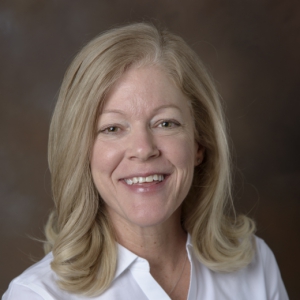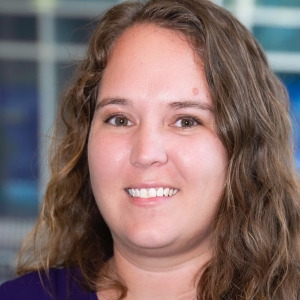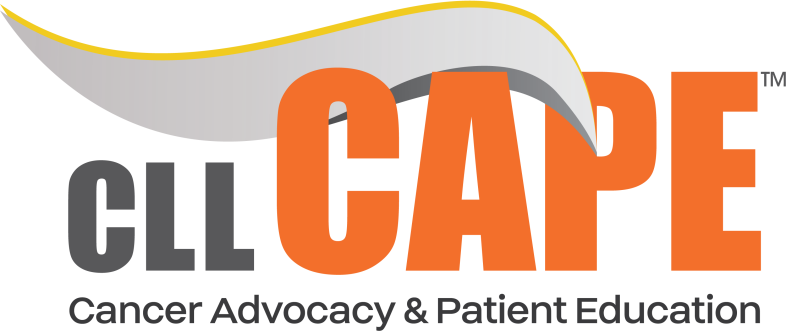
Ms Barkett is an oral antineoplastics nurse navigator at Banner Health University of Arizona Cancer Center and co-chair of the AONN+ CAPE CLL Initiative.

Ms Passwater is clinical associate professor at East Carolina University and co-chair of the AONN+ CAPE CLL Initiative.
Chronic lymphocytic leukemia (CLL) is the most common adult leukemia. The American Cancer Society estimates over 20,000 new CLL cases and over 4000 attributed deaths in 2022.1
As with all cancers, patient education is a key component of care; but unlike most cancers, many patients will not immediately receive treatment. Instead, they will follow a “watch-and-wait” approach until symptoms meet the criteria of active disease.
Throughout the entire care continuum, there are unique challenges for patients with CLL that navigators can address. For example, many patients can be lost to follow-up during the watch-and-wait phase. Further, there are many factors to consider—and explain to patients—when selecting a therapy once the disease has become active.
As a result, personalized education for each patient is key. Providing the right information, at the right time, in patient-friendly language appropriate for that patient’s health literacy, is a very important aspect to cancer care.
The publishers of JONS had the opportunity to speak with Nikki Barkett, BSN, RN, OCN, and Chelsea Passwater, DNP, RN, AGCNS-BC, OCN, co-chairs of the AONN+ CLL CAPE Initiative, about CLL, the impact navigators can have throughout the course of the disease, and how the CLL CAPE Initiative can help.
JONS: Let’s begin by talking about treatments for CLL and how they are tailored, or personalized, for each patient.
Ms Barkett: As you know, cancer care is increasingly becoming more personalized as therapies evolve. In CLL, the patient’s treatment plan will depend on the staging of disease, age, chromosome abnormalities, traits of the CLL cells, overall health status, and, of course, the patient’s preferences and goals. Possible treatments for CLL include chemotherapy, monoclonal antibodies, targeted therapy, stem cell transplant, and supportive care. I should also mention that there are many promising new therapies on the horizon.
Ms Passwater: Yes, that’s right. Treatment plans should be individualized based on clinical assessment and patient preference. Shared decision-making with the patient and family is definitely part of the process to ensure patients and their families are on board and understand the implications of the treatment plan. Shared decision-making also improves patient adherence with the plan of care.
I’d like to point out that not all patients require immediate therapy for CLL. But when therapy is initiated, it should be chosen to maximize efficacy and minimize overall toxicity, where the risk of treatment is lower than the risk of disease.
JONS: How do you determine when a patient requires therapy?
Ms Passwater: The International Workshop on CLL, or the IWCLL for short, recommends watchful observation for patients who have asymptomatic disease.
The IWCLL criteria for active disease include progressive marrow failure, such as new or worsening anemia, thrombocytopenia, or neutropenia; massive progressive or symptomatic lymphadenopathy or splenomegaly; recurrent autoimmune complications; disease-related symptoms, such as unintended weight loss, significant fatigue, persistent fevers, or night sweats; and finally, progressive lymphocytosis.
Patients who do not meet the criteria for treatment should undergo age-appropriate cancer screenings, annual dermatology visits for skin cancer screenings, and appropriate vaccinations to reduce infection risk. Patients with low- or intermediate-risk CLL should be monitored for disease progression every 6 to 12 months. Patients with high-risk or very high-risk CLL should be offered participation in early intervention trials and should be monitored for disease progression every 3 to 6 months.
JONS: Once a patient has met the criteria for active disease, what are the common treatment options they will consider?
Ms Barkett: I’ll try to give you an overview of possible treatments. For patients with symptomatic disease, ibrutinib is often recommended and has been shown to be superior to conventional chemotherapy in terms of response rate, progression-free survival, and overall survival. It has also been shown to be less toxic regarding severe adverse events or toxic deaths.
Patients with mutated CLL without TP53 aberrations may be candidates for fludarabine, cyclophosphamide, and rituximab (also called FCR), which can be completed in 6 months. When compared with ibrutinib, which must be taken indefinitely, the FCR option may be valuable for noncompliant patients or in patients for whom ibrutinib is contraindicated.
Other patients may receive a frontline combination of venetoclax and obinutuzumab—or VO. In clinical studies, VO was administered for 2 years, which may be appealing for older patients who are unfit to receive ibrutinib. The healthcare team will determine the best treatment option for each patient by considering the patient’s comorbidities, potential for toxicity, side effect profiles, and the patient’s frailty.
I will also mention that the alternative BTK inhibitor acalabrutinib recently received FDA approval for frontline therapy.
JONS: What about patients who have relapsed or refractory disease?
Ms Barkett: It really depends on prior therapy used and other factors such as refractoriness versus intolerance. Ibrutinib is the gold standard treatment for patients with relapsed or refractory disease. However, this is changing based on an increased proportion of patients who receive frontline ibrutinib and the development of effective alternative options.
Another treatment option is venetoclax, which may be considered for patients with relapsed, refractory CLL based on superior response rate, progression-free survival, and overall survival.
Other possible treatments include PI3K inhibitors and alternative BTK inhibitors.
JONS: I’d like to go back to your comment about the watch-and-wait period for patients. How can navigators help their patients through this phase of care?
Ms Barkett: Yes, the watch-and-wait period can cause fear and anxiety in patients, and navigators are in a perfect position to assess and address these issues. Many times, patients feel their medical team is not acting quickly enough; this is because they do not understand why treatment is being delayed.
Navigators can ease this anxiety by thoroughly explaining the watch-and-wait period in their initial education. Providing education about the watch-and-wait phase is so important. Patients need to understand that this phase is different for each patient and depends on the specific nature of their disease—age, comorbidities, and specifics related to genetic mutations.
Ms Passwater: I’d also like to point out that navigators can help ensure that patients do not become lost to follow-up during this phase by completing timely follow-ups with the patient and understanding the nuances of this watch-and-wait period. As Nikki mentioned, personalized education is key, and the patient’s health literacy is always an important factor that must be considered when providing that education.
JONS: The genetics of CLL can assist in determining prognosis and treatment planning. What is the role of the navigator when it comes to this aspect of care?
Ms Passwater: Genetic testing helps ensure that patients understand the specific “personality” of the cancer, so to speak. Mutations in driver genes, such as SF3B1, DDX3X, and ATM, may be detected in patients with high-count monoclonal B-cell lymphocytosis approximately 41 months prior to disease progression. Some common gene mutations in CLL include Notch 1, TP53, and XP01. These mutations allow the medical team to personalize a treatment plan as best as possible.
As a navigator, connecting the patient and family with a genetic specialist to help them understand their specific mutations is key. Navigation can complement genetics education by reinforcing patient comprehension as well as answering any questions that may arise. Navigators are not expected to be genetics experts, but they should familiarize themselves with the language and understand when referrals to genetic counselors are necessary.
JONS: Adherence to medication is a common issue in oncology care. Can you speak to the importance of treatment compliance and the role of the navigator in improving adherence?
Ms Passwater: Absolutely. Nonadherence is associated with disease progression, worse survival outcomes, and contributes to increased healthcare utilization and cost. The correlation between adherence and healthcare costs for the CLL population is significant.
Adherent patients have a significantly lower likelihood of healthcare utilization and incur lower medical costs. Despite this, they may have high prescription costs due to the therapies that they’re receiving. With CLL treatment being provided in the outpatient setting and CLL patients taking oral therapies, navigators have an important role in providing care coordination, adverse event management, and barrier assessment to promote treatment adherence.
Navigators should consider several factors to enhance compliance to treatment, including age, comorbidities, health literacy, social determinants of health, finances, psychosocial support, and the patient’s personal support system. The strategies that navigators may use to help with compliance vary by patient and also by navigator. It is important that the navigator work to individualize education and compliance strategies based on social determinants of health and patients’ preferences.
For example, some patients are savvy with technology, so helping them sign up and organize a phone- or web-based application may work well for them, whereas some patients prefer a paper calendar with visual cues. It is important to ensure that patients have what works best for them to achieve the highest chance of compliance and treatment success.
JONS: We’re probably preaching to the choir, but oncology care coordination is complex and challenging even for the most experienced of navigators. Can you talk about this aspect of care from the navigator’s perspective?
Ms Barkett: Yes, cancer care in general is complex, and CLL treatment is no different. The quote “It takes a village” is used pretty often in our field because of the complexity of care and the need for timely coordination. Navigators can be the solution to tying all the pieces together for the patient and their family throughout their cancer journey.
Because most patients are older than 65 years at diagnosis, many have multiple chronic comorbidities, such as renal insufficiency, arrhythmias, hypertension, or other conditions, that limit quality of life and performance status. This highlights the importance of cooperative management with the primary care physician and/or other specialists in selecting appropriate treatment regimens.
Throughout care, navigators provide a frontline defense of the patient’s goals and wishes. So, it is important that navigators participate in tumor board and multidisciplinary conferences regarding their patients. Navigators can provide pertinent details to the patient’s medical team while also ensuring coordination of care across the continuum.
JONS: Both of you are co-chairs of the CAPE Initiative for CLL, where “CAPE” stands for Cancer Advocacy & Patient Education. CAPE is an online resource where navigators can download educational materials for their patients. Can you describe this resource?
Ms Passwater: My pleasure! Navigators can register for the CAPE program on the AONN+ site to have access to an entire web-based library of educational materials to give to their patients and their families at each point of interaction.
It’s the information they need at the time they need it. It’s truly an invaluable resource to navigators to help them to thoroughly educate patients on this complicated disease.
Ms Barkett: Yes, the CAPE program can really help navigators to improve the patient experience by informing them through timely educational materials and hopefully empowering them to fully engage in their care. We strongly encourage all navigators who work with CLL patients to register on the AONN+ website at AONNonline.org.
JONS: Thank you so much for taking the time today. Wishing you continued success with the CAPE program.

Did you know?
The Cancer Advocacy & Patient Education (CAPE) initiative
- Hosts a web-based library of chronic lymphocytic leukemia (CLL) educational materials for navigators to distribute to patients
- Engages with experts in CLL who created best-practice, evidence-based educational materials specifically for each point of patient interaction
- Helps navigators to improve patient experience, engagement, and empowerment
- Is available to navigators by registering at AONNonline.org
Reference
- American Cancer Society. Cancer Facts & Figures 2022. Atlanta, GA: American Cancer Society; 2022.



